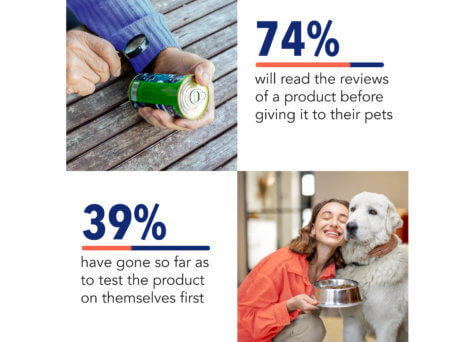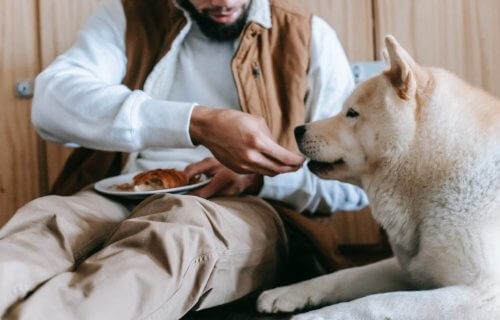
NEW YORK — When pets are around, beware, a new study finds anything can become “food.” The average pet owner catches their animal eating something they shouldn’t about four times per day.
A poll of 2,004 cat and dog owners finds that 61 percent have lost sleep over the thought of their pet eating something they shouldn’t. Another 39 percent have even caught their pet rummaging through the trash. Conducted by OnePoll on behalf of ElleVet, the survey shows that more than half the poll (56%) use the words “stop” and “no” to curb their pet’s unwanted behavior, while about one-third (35%) will put their pet on “time out.”
Other misdeeds that respondents see include unnecessary vocalization or barking (41%), climbing on curtains or other furniture (40%), and stealing food off a human’s plate (38%).
According to Dr. Joseph Wakshlag, professor of nutrition and sports medicine at Cornell University College of Veterinary Medicine, these habits don’t typically come from a malicious place on the part of your pooch or kitty.
“Ingestion of foreign items in many cases can be a learned behavior in dogs, particularly when another animal in the house is playing with it or eating it,” Wakshlag says in a statement. “In addition, research has shown that dogs will ingest or lick foreign objects when they have GI distress, so this behavior should be followed up with questions regarding appetite, nausea or regurgitation.”

Pet food taste test
The poll also explored the lengths pet owners will go to manage what makes it into their furry friends’ bodies. Almost three-quarters (74%) will read the reviews of a product before giving it to their pets.
However, 39 percent go so far as to test the product on themselves first, with food (56%) and treats (53%) being the most common things pet owners will taste first! Of those who’ve served as their own pet’s guinea pig, 53 percent did so purely out of curiosity. Another 29 percent even admit that the product tasted good to them.
Nearly half the poll (46%) trust their veterinarian the most when it comes to new products for their fur babies, so it’s no surprise that 48 percent consult with their vet about the safety of a new product. More than three-quarters (77%) believe they’re well educated in what they can and cannot give to their pets.
Seventy-one percent also agree that they are more careful about giving their pets new products than they are trying something new themselves. Regardless of who they consult, 77 percent of pet parents closely monitor their pet after giving them something new.
“Since dogs and cats have unique toxicities compared to humans, it is always safest to use products that are specifically designed with species in mind,” Wakshlag notes. “Using products with the National Animal Supplement Council seal of approval is safest, as we know these products have been vetted by a third party.”
